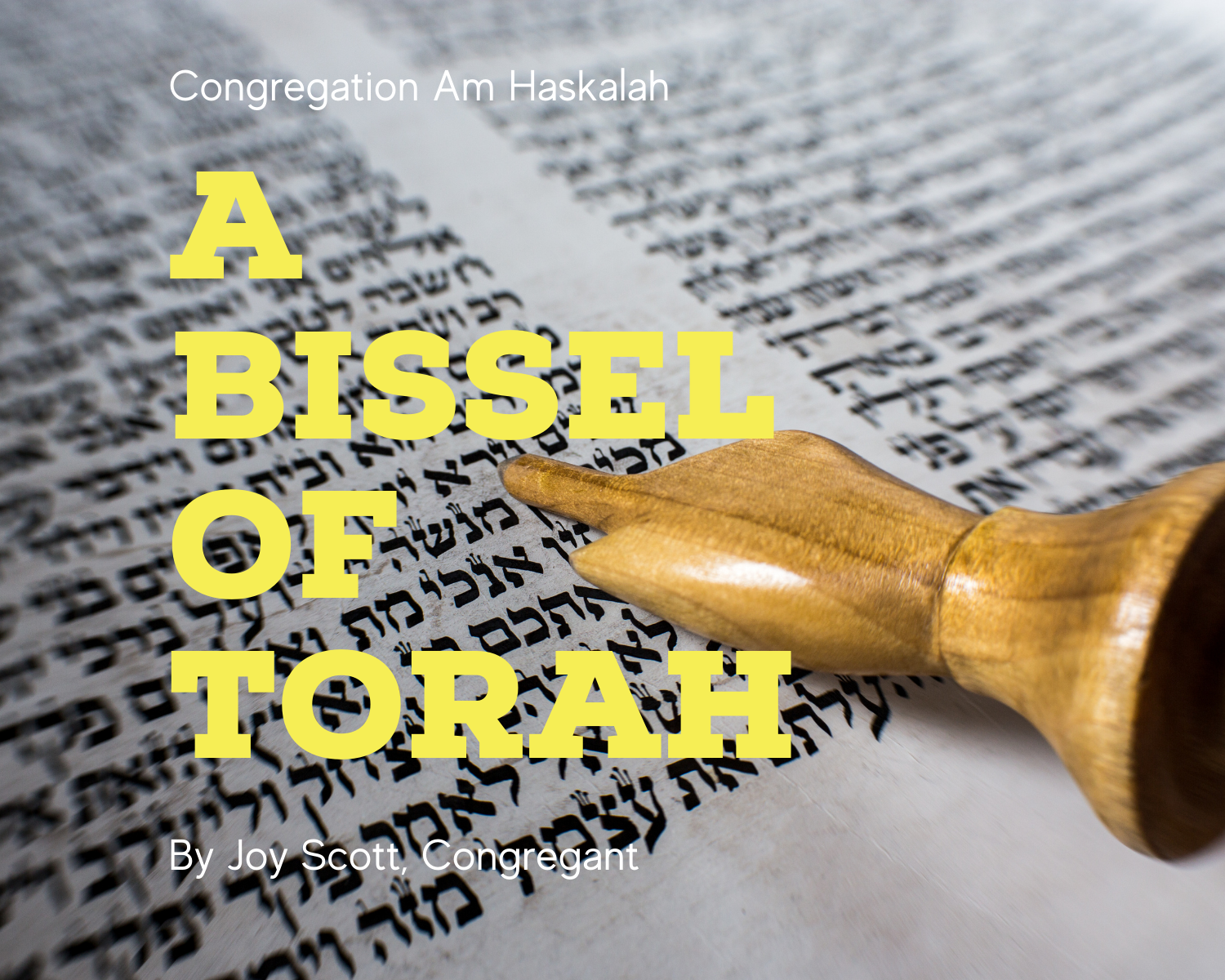By Joy Scott, Am Haskalah Congregant
This week’s Torah parsha, Tazria, is extraordinary not for its content, but for its absence of content. Tazria has been labeled “the Torah parsha least likely to be studied”(1). It has also been accused of having “challenged and confused generations of Torah scholars, as well as legions of rabbinical students”(2).
To understand the rationale for these astonishing descriptions of a specific Torah parsha, it is necessary to comprehend the nuances of the Jewish calendar and the impact on reading the Torah. A typical ‘lunar-based’ Jewish calendar equates to 354 days (eleven days less than the Gregorian or ‘Modern Day’ calendar). However, to ensure that the entire Torah is read within a singular year, there are several weeks where we are required to read a double parshiot(3). In all situations where a double parshiot is read within one week, each individual parsha is singular in its narrative and insights. The aberration to this independence of each individual parsha is manifested, specifically when this week’s Torah reading is separated from its usual partner: Metzora.
Notably, the Jewish calendar is designed to enable an additional month to be added, creating a ‘leap year’, seven times in every nineteen years, with the consequence that parsha Tazria is read separately from parsha Metzora. This year, 5782, happens to be one of those leap years(4).
The major theme of Parsha Tazria is the bizarre phenomenon of tzaraat, a physical manifestation of a spiritual demise, resulting from a serious, unknown sin or transgression. The symptoms can include skin, hair or limb discolorations, blemishes or blisters of the skin, whitening of the hair or even mold or obvious stains on clothing.
If afflicted with tzaraat, the individual is required to visit with a designated Kohen. Although the Kohen is not a medical doctor, he is charged with evaluating the extent of the spiritual decline, based on the symptoms (5).
Every Israelite, who has been affected with this bizarre condition is required to meet with the Kohen weekly. It is the responsibility of the Kohen to determine if the symptoms continue to exist or if the situation has deteriorated. In either case, the man or woman is to be banished from their respective community. This punishment of separation from one’s family and friends is considered onerous, and one of the most formidable means of shaming an individual for committing a burdensome act(6).
There is a bewildering essence of parsha Tazria when separated from its companion parsha, Metzora. The reader is acutely aware that a transgression has occurred, the Kohanim has identified the specific culprit of the offense, as well as the severity of the malfeasance and the subsequent punishment.
However, within this parsha no indication is provided pertaining to the specific victim (or victims), nor to the exact nature of the violation. This parsha leaves the reader with a perplexing enigma, which can only be clarified by reading parsha Metzora.
FOOTNOTES:
- www.torahinmotion.org
- Rabbi Michael Rosenak, PH. D, “Midrash and Medicine” (Hebrew University Press, 2005)
- Bar Ilan University Torah Center (Tel Aviv, Israel)
- www.MyJewishLearning.com
- Jewish Virtual Library
- Aish.com
